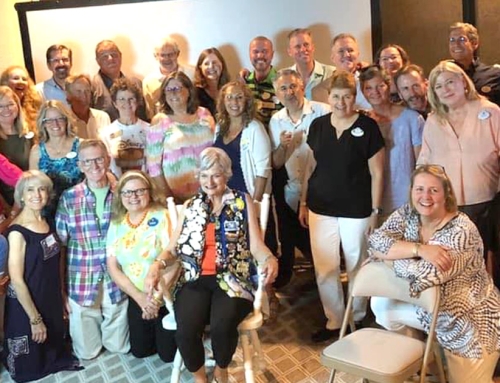 By Kim Court
By Kim Court
There aren’t any quick fixes when it comes to transforming an organizational culture to create better patient or customer experiences. But there are a few tools that, when implemented, can have a dramatic effect and perhaps serve as the catalyst for the intentional design of a long-term, sustainable culture.
One of those tools is mystery shopping. Traditional mystery shopping techniques help organizations evaluate the customer experience. And, while the name implies a covert operation, mystery shopping really just means looking at the customer experience through the customers’ lens. The idea is to identify what’s working and what’s not and then find solutions to problems to make the experience better.
But where’s the tool to measure whether employees believe ‘this is a great place to come to work’?
At Integrated Loyalty Systems, our team takes Mystery Shopping to a new level by conducting a Pride Audit, or a first impressions audit. We call it a Pride Audit because the goal is to asses something that is often difficult to measure: employee pride.
Pride Audits
If employees have pride working at an organization, they’re happy to be there. And, they’re more likely to have positive interactions with patients and one another and thus, more likely to create good customer and patient experiences.
Pride Audits are conducted at the very beginning of a two-year Cultural Transformation process. This is done intentionally because the results of the audits serve as a baseline against which we can track growth and progress. You can’t know where you’re going if you don’t know where you’ve been.
How Pride Audits Work
Eye Contact and Smile Are employees proactively friendly?
Employee Name Tag Are name tags visional at all time?
What makes a Pride Audit work is pretty much the same thing that makes traditional Mystery Shopping work: going undercover. Our team dresses in casual attire to blend in with visitors or patients at a hospital and we walk around patient areas, offices, and hallways taking pictures and making observations.
As we walk and observe, we measure things that we believe either lessen or contribute to anxiety, fear of surprise, apprehension, uncertainty, etc.
 In fact, Florence Nightingale’s famous quote often serves as a guidepost during these Pride Audits: “Apprehension, uncertainty, waiting, expectation, fear of surprise, do a patient more harm than any exertion.”
In fact, Florence Nightingale’s famous quote often serves as a guidepost during these Pride Audits: “Apprehension, uncertainty, waiting, expectation, fear of surprise, do a patient more harm than any exertion.”
Two key things we look for in our walk are very basic but often overlooked. They don’t have anything to do with the clinical aspects of patient care. Rather, they are the “human side of healthcare” – the things that can profoundly affect the patient’s perception of their experience.
Eye Contact and Smile
The first item we thing we look for in Pride Audits is whether employees make eye contact and smile. Did they look up as we walked past? Were they pleasant?
This interaction requires careful attention and although it’s based solely on our impressions, it’s an interesting experiment into what employees do (or don’t do) when they aren’t involved in a formal patient interaction. During this part of the assessment, our team measures whether employees are (or are not) proactively friendly – i.e. did they reach out to us first with eye contact and a smile? And, conversely, we also measure if employees were actively unfriendly: i.e. our team made eye contact or smiled first and the employees actively turn away.
Often, we find people aren’t being intentionally rude. They’re just afraid someone is going to stop them and ask them questions. And then it becomes a problem because now it’s morphed into an attitude of indifference. The solution isn’t to tell employees to smile and make eye contact more. The solution is to teach every employee how to practice proactive anticipation. Will it take more time? Sure. But imagine if every employee proactively greeted patients or customers, answered their questions, and took them where they need to go? The frequency of how often every employee would have to do this would go down!
Name Tags
The other item we measure in Pride Audits is name tags. Name tags might seem insignificant but they’re one of the most important things because first and foremost, patients (and visitors, vendors, and other employees) need to know who we are. Name tags are the vehicle to start a relationship and so in our measurement, we look for how many are in a place where patients can see them and also read them.
Too often, we find organizations have lost a sincere appreciation for the employee name tag. They’re often attached to a lanyard and used as access cards, clock in/clock out badges, etc. And frequently, name tags are flipped over, covered up by an employee’s hair or clothing, or worn from so much use that they’ve become hard to read. How can you start a relationship with someone you literally don’t know?
World-class organizations such as Disney, Ritz-Carlton, and Southwest Airlines require their employees to not only wear name tags but to wear them in a way that ensures customers can see and read them clearly.
Disney takes it one step further and requires their employees to have their first name and hometown printed on the name tag. This serves a dual purpose because it allows guests to greet employees by name and opens the door for a human connection to be made if the guest recognizes a familiar town or city. Also, Disney cast members always wear their name tags on the left side of their costume (uniform), just over the heart.
We do a few other things as part of our assessment including asking patients if they could change one thing about their entire patient experience, what would it be?
And, we ask a sample of care team members (both clinical and non-clinical) what their experience is like and if they feel appreciated, as if the organization has their back?
Ultimately, we try to measure the level of pride an employee has in being an ambassador of the organization. This is their work home and in a work home you have guests visiting where everyone enters a stranger, and everyone leaves a friend. Just like your real home.
At home, most of us would pick up trash or garbage before visitors come. We’d pick up spills on the floor and we’d clean the bathroom mirror too. In our assessments, we use hidden cameras to see if employees would do the same thing in their work home. Many do. But many don’t. If everyone enters a stranger, how can they leave a friend?
Pride Audits are a necessary first step for organizations that want to create a culture that supports the delivery of exceptional patient experiences.
In fact, the results of Pride Audits can have a profound impact on hospitals and care organizations. By understanding what is being done well and the areas that need improvement, the organization as a whole can begin to design a culture with intention by identifying what behaviors they will stand for and what behaviors they will no longer stand for.
When employees have pride in where they work and in the work they do, when they smile and make eye contact proactively, when everyone wears name tags that are visible and clear to patients and each other; when everyone picks up trash; when everyone answers patient questions; etc., that is pride in the organization. And that is when employees will articulate their culture in their words and deeds by communicating “this is the way we do things here.”





